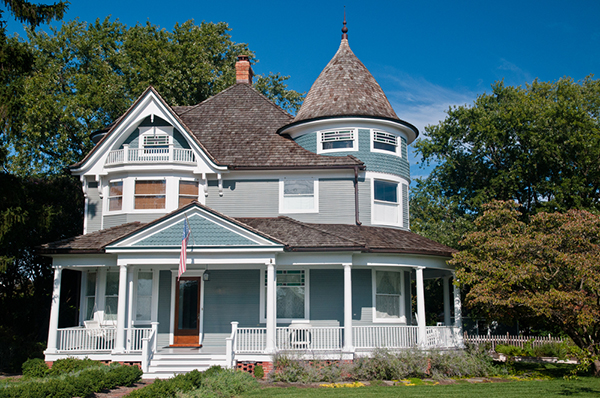How Do the Different Kinds of Roof Designs Affect A Replacement?
Author: Amy Freeman | May 5, 2023
No two roofs are completely identical, even if they look similar. This is why the cost of repairing or replacing a roof can vary so much. In some cases, roofs are notably different from each other: The roof on one home might be a basic gable shape, with two separate sections that come together at the top, while the roof next door could be a mansard style, made up of eight sections that join together.

The different kinds of roof designs affect the replacement process. If you're considering getting a new roof, learn more about how the particular architectural features of your home might influence the cost of the project or how long it will take to complete.
The Pitch of the Roof
The pitch, or slope, of the roof, refers to how steep it is. Different kinds of roof designs range from flat roofs, or low slope roofs, to steep slope roofs. Some roofs feature a mix of different pitches, which connect together in valleys. If your home's roof is steeply pitched, the replacement process can be more complex, as the people working on the roof won't be able to walk on it. Replacing a steep slope roof may also require additional safety equipment, which can increase the project price.
A roof with multiple pitches that connect together at valleys or hips will also usually make the replacement project more complicated, potentially increasing the cost and timeline. It's vital that the roofing contractor install the valleys correctly when replacing the roof to reduce the risk of leaks and to ensure that the new roof lasts for as long as possible.
Architectural Details
The architectural details on the roof — such as the presence of dormers, an attached covered porch, or turrets — also influence the complexity of a replacement project. These may connect to the rest of the roof in a way that requires a considerable amount of attention on the part of the roofing contractor. For example, when replacing the roof on a dormer window, the contractor will need to ensure that the valley between the main roof and the section over the dormer is watertight. They'll also have to be cautious when replacing the roof around the vertical edge of the dormer itself.
If your home dates to the Victorian era, it may have a turret or cone at the top. These are small towers, usually located at the corner of a home, that lend an interesting look but can prove to be a challenge when it's time to replace the roof portion. Turrets and cones have steep slopes and usually require the replacement shingles to be cut in a non-standard way.
Design
The roof's design, whether it's a gambrel, mansard, hip, or rounded roof, also affects the replacement cost and the overall project. You can usually expect the replacement cost of a mansard or hip roof to be higher than that of a gable or low-slope roof of a similar size, due to the steepness of the roofing sections. A roofing contractor also needs to pay particularly close attention to the ridge of a hip roof to make sure that there is an adequate amount of ventilation from the attic. Often, mansard roofs will have architectural features, such as dormer or inset windows, that require flashing to prevent leaks and moisture damage.
Other Features
The features that are built into your roof or that rest on top of the roof will also influence the cost and complexity of a replacement project. For example, if you have solar panels installed on your roof, you will need to move the panels before you replace the roof, which will bump the price up. If there's a skylight on the roof, you'll have to decide whether to keep it in place after the roof replacement or to remove it entirely.
Since no two roofs are alike and no two roofing contractors are the same, it's a smart idea to get several estimates before you begin any roofing project. Ask multiple roofing contractors how your roof's particular style will affect the cost and timeline of the project and what they plan on doing to accommodate its unique features.